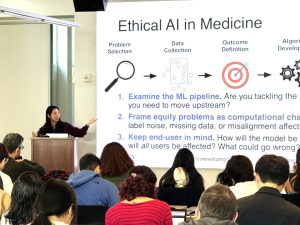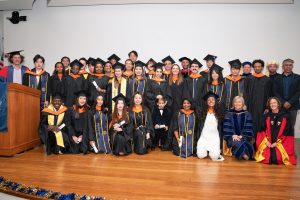An occasional series with Blum Center faculty, staff, students, visitors, and friends
Ananya Roy is Professor of City and Regional Planning, Distinguished Chair in Global Poverty & Practice, and Education Director of the Blum Center for Developing Economies at the University of California, Berkeley. Among the most popular professors on campus, Roy has won multiple UC Berkeley teaching awards and was named California Professor of the Year by CASE/Carnegie Foundation in 2009. She has published extensively in the areas of international development, poverty and inequality, and global urbanism.
To provide greater access to Roy’s scholarship, the Blum Center asked her three questions about a recent article in the journal Cities entitled “‘The Anti-Poverty Hoax’: Development, pacification, and the making of community in the global 1960s,” which she co-authored with Stuart Schrader and Emma Shaw Crane. Professor Roy’s answers are below.
1. Why is the history of the word “community”—as used in poverty and development work—important?
Ananya Roy: The idea—and ideal—of community is central to poverty action, international development, and social justice organizing. In urban planning, I find that students see community development as a progressive space in and through which they can make social change. Similarly, in GPP [the Global Poverty & Practice minor at UC Berkeley], many of our students believe that acting at the scale of community and collaborating with community-based organizations is an ethical and responsible mode of poverty action. Yet, these young professionals and poverty activists are often frustrated once they are immersed in community action and community development. Our efforts to trace the history of U.S. community development are inspired by such aspirations and frustrations. In the Cities journal article, my colleagues and I wanted to show how the emergence of community development amidst the turmoil of the 1960s tells us something important about how and why community became the dominant concept for understanding and managing the urban geography of poverty (in the U.S. and elsewhere) and why it remains limited as an instrument of radical change. In other words, we hope that the history we narrate serves as an analytical framework for interrogating the consensus on community that seems to extend across various types of poverty action and development work.
Emma Shaw Crane (article co-author): The idea and ideal of community has been widely celebrated by everyone from social justice activists to philanthropic foundations to the police, who are now practicing not just policing but community policing. And yet, behind this celebrated idea, there is a very particular history of how the concept of community became important. In order to understand a popular idea almost always understood as benevolent and natural and empowering, we had to trace a messy history of fierce contestation about who gets to decide what constitutes a community, and who gets to represent this community once it has been created as a category! So in investigating where this idea comes from, we inevitably had to think critically about power and representation.
2. You write, “the emergence of poverty as a domestic and international public policy issue in the 1960s was closely linked to anxieties about racialized violence in American cities and wars of insurgency in the global South.” How close do you think this link remains today?
Ananya Roy: In the late 1990s, poverty (re)emerged as an urgent human problem of global concern. Unlike the 1960s, this framing is much more concerned with poverty in the global South. In fact, I would argue that there is a stark divergence between how poverty is framed in the U.S. (e.g., as welfare dependency) and how poverty is framed in the context of the global South (e.g., as human development). But it is clear that the concern with poverty remains closely yoked to strategies of pacification. With 9-11, the global war on poverty merged with the global war on terror. As I have shown in my previous research on microfinance, anti-poverty policies were promoted to manage “hotspots” of terrorism. And in many ways, the concern with poverty, especially in institutions such as the World Bank, USAID, and IMF, appeared in direct response to powerful and vocal global social movements that rebelled against the structural adjustment policies of the 1980s. Activist Walden Bello, founder of Focus on the Global South, calls this the “people’s counter-offensive” and notes that it is this type of action that brought an end to the austerity agenda of the Bretton Woods institutions. In other words, as we demonstrate in the article, there is an interesting and complex relationship between poor people’s movements and bureaucracies of poverty. As a side note, I should add that quite a bit of the current academic and policy research on poverty and poverty action ignores poor people’s movements.
3. In light of your research on community development and pacification, how do you view what has been unfolding in Ferguson, Missouri since the police shooting of Michael Brown?
Our co-author Stuart Schrader is completing a dissertation (at NYU) on the history of the police in the U.S. and its entanglement with histories of American imperialism. We finished writing this article in the wake of the Trayvon Martin tragedy, and we now see it published as the Michael Brown tragedy unfolds. Our article argues that the history of U.S. community development is inevitably racialized. Once again, poverty studies and the proliferating modes of poverty action remain silent on this matter. That silence must be broken. We must recognize that marginalized communities in the U.S., often defined and redlined through a long history of racialized exclusion, continue to suffer from both economic oppression and police oppression. To act on poverty requires acting on both forms of oppression.





